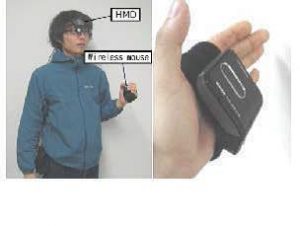Source:
Andreas Zingerle, Tyler Freeman. 2011. Enabling the VJ as Performer with Rhythmic Wearable Interfaces. In MM ’11 Proceedings of the 19th ACM international conference on Multimedia Pages 765-766, Scottsdale, Arizona, USA — November 28 – December 01
Summary : Andreas Zingerle and Tyler Freeman, authors of this article talk about an experimental wearable controller called VJacket. This jacket is compound with several sensors that detect body movements (bending, touching, hitting) and can send the information to the VJ program.
The main function is to manipulate visual output in a rhythmic way. Sensors are the best option for this because they are small (some are flexible) and can be placed in the body a difference to a mouse and a keyboard that are very rigid. Also sensors in the body are more precise than a mouse if we talk about making rhythmical sound.
With the VJacket the performer will be able to control a video just using his/hers body movements. The authors talk about the maracas-based “rhythmism“, which is a project were the instrument becomes a performance tool. Depending on the speed, and the way it moves, the video may change. The authors are convinced this technology is the future for Karaoke bar, Rock bands and DJs performances (Djs are going to be able to move and walk around the nightclub).
In this article the authors mention that they designed their own Arduino software (Arduino2OSC) to have the chance to use more than one sensor. It is a very interesting software because with it you can adjust the values of the sensor because little by little the can get a little bit damaged after each performance. To avoid replacing them, you just have to change the valued in the code.
Relevance for our project: This article is relevant to our project because it give us the option to explore with Arduino2OSC and think about attaching the sensors in clothes instead of directly in the body. It is also a very interesting article that gives us some inspiration for the project.


